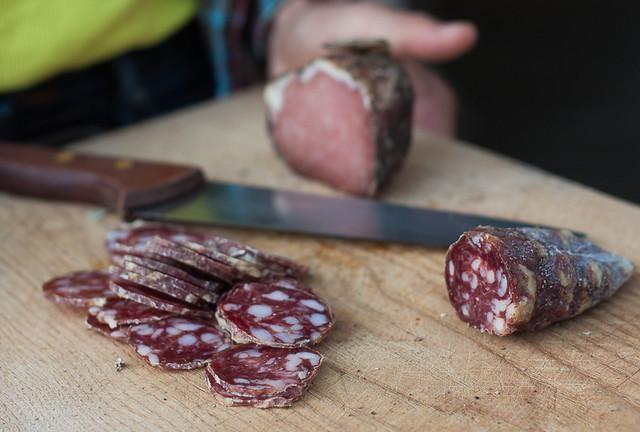
The Corsican flag
Corsica's an island with a strong identity. Its idyllic beaches and its proud people have played a role in its success. And, when it comes to its flag, it's recognizable at first glance. But, what's its history and what does it mean?
THE CORSICAN FLAG: A REAL SYMBOL
The Corsican flag is known around the globe: it stands out from the crowd as it portrays the profile of a Moor's head wearing a white bandana around his forehead. Although the visual image and the symbol are powerful, people are often unaware of its history and what it means.
Origins of the Corsican flag
The origin of the Corsican flag is a topic of debate, yet two assumptions frequently stand out: one stems from a legend, whilst the other is proposed by historians.
THE LEGEND BEHIND THE CORSICAN FLAG
In the 13th century, a young Corsican woman called Diana was kidnapped by the Moors. These slave traders who were engaged in raiding apparently intended to sell her to the King of Granada, Mohammed.
Her fiancé, Pablo, managed to free her and they returned to the island, to their home town, Aléria.
King Mohammed was furious and sent his Lieutenant Mansour to capture the young woman. A fierce battle followed in which the Moors were defeated and Mansour beheaded with his head placed on a spike and displayed as a trophy.
Legend has it that the head of the Moor was chosen as the symbol to commemorate this victorious day and the insubordination of the people to the king's wrath.

THE ORIGIN OF THE CORSICAN FLAG AS SEEN BY HISTORIANS
Historians have a more plausible version of its origin. Back in the days when heraldry reigned, it was commonplace to take the flag of one's enemy when they were defeated: and, this is how the heads of Moors appeared on the Aragon flag, following the victories won during the crusades.
In 1281, the Moor's head also adorned the seal of King Peter III of Aragon. The Aragonese coat of arms portrayed 4 heads.


As Sardinia and Corsica were part of the Kingdom of Aragon, Sardinia kept the 4 heads, whereas Corsica only kept one.
Meaning of the Corsican flag
To understand the meaning of the Corsican flag, we have to delve into the history of the Island of Beauty.
After the Pope offered Corsica to Spain, it later fell under the yoke of the Republic of Genoa. In 1755, General Paoli proclaimed the independence of Corsica and in 1762 the "A Bandera Corsa" flag became the official flag of Corsica.
In 1778, the island was sold to the Kingdom of France. It became independent again in 1794 and in 1980 the Corsican flag was acknowledged as a regional flag.
The flag would become THE symbol of independence. If you take time to look at the Corsican flag in detail, you can see a head with a proud expression, looking into the distance, with the bandana floating in the air: a spirit of freedom and pride radiates from this flag and this is why Paoli chose it in 1755.
Changes in the Corsican flag
The Corsican flag existed long before General Paoli chose it as Corsica's emblem. The Moor's head had earrings and the eyes were blindfolded.
Afterwards, the bandana adorned the forehead and symbolized freedom.


Corsican flag and by-products
The Moor's head, the symbol of the Island of Beauty, features on a wide array of objects. Although the Corsicans display their flag with pride, tourists are seduced by various souvenirs that they take back home from their holidays in Corsica.
T-shirts, beach towels, tote bags, etc. portraying the Moor's head, as well as the Corsican knife, are just some of the unmissable items you can find in shops. Stickers, mugs, magnets and key rings are also very popular: little souvenirs that don't take up much room, aren't expensive and are sure to please.
In Corsican souvenir shops, you can find a wealth of other more or less unusual objects, yet holidaymakers just love buying regional products to take back home from their stay in Corsica. It goes without saying, Corsica is renowned for its gastronomy.
Between Patrimonio wine, brocciu (Corsican milk and whey cheese), Corsican cold cuts, fiadone (Corsican cheesecake) and Pietra beer*, you'll be spoilt for choice; so, indulge... take a little taste of your holidays back home and, at the same time, invite your friends and family to discover Corsican culinary specialities.
*Excessive drinking is dangerous for health, drink with moderatio




